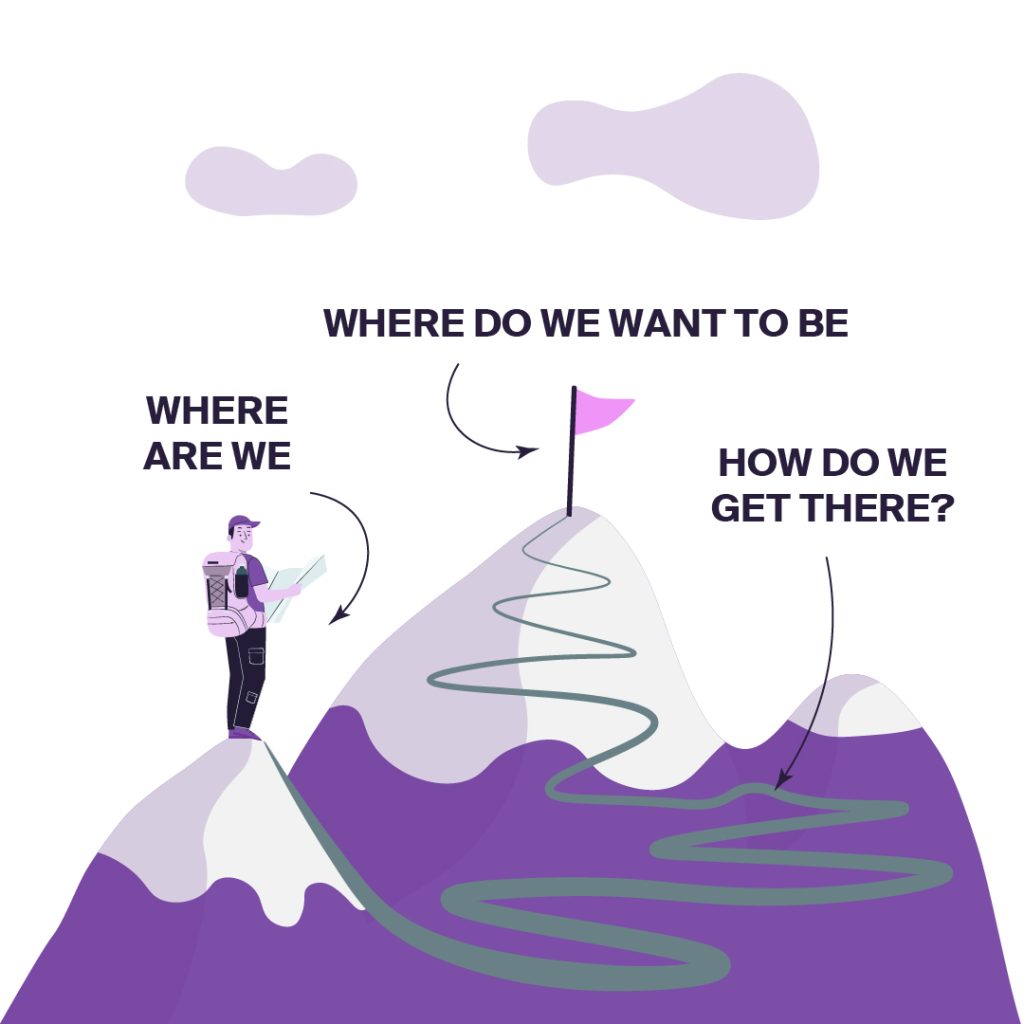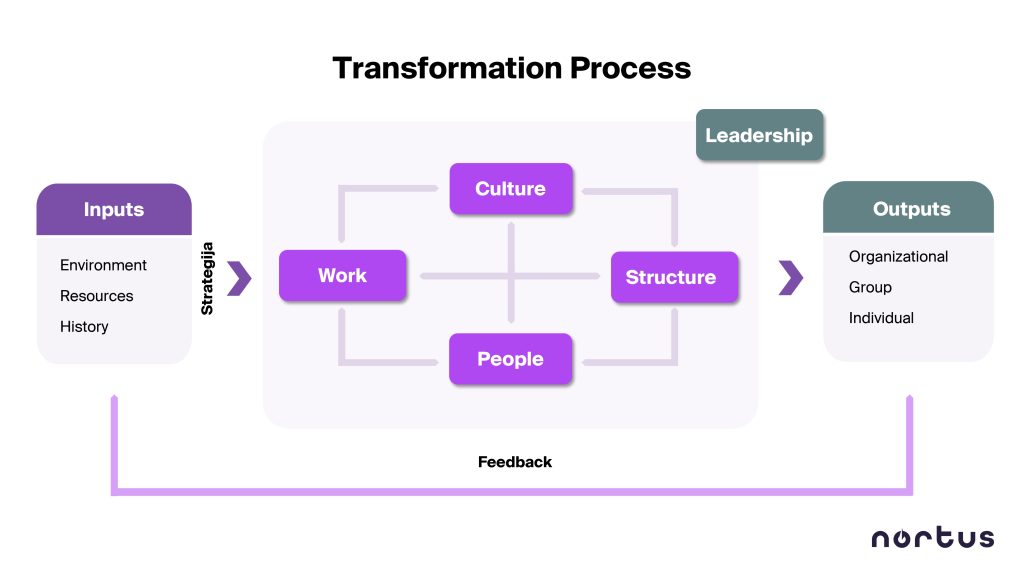
Developing a long-term strategy is a cornerstone of business excellence. In a rapidly evolving landscape, such a strategy provides a clear roadmap for growth, innovation, and resilience. It aligns business activities with overarching goals, empowers effective resource allocation, and cultivates a competitive advantage. By investing in a well-structured long-term strategy, businesses can navigate challenges, seize emerging opportunities, and foster enduring success in an ever-changing marketplace.

Long-term strategy development process consists of 3 stages
Using the Congruence model, we conduct a thorough business analysis – assessing the organization’s current situation by delving into the organization’s strategic objectives, structure, competitive environment, market trends, financial performance, operational processes, technology solutions, employee dynamics and prevailing culture.
Based on the insights gathered, we work with your organization’s team to develop a long-term strategy that is resilient to the short-term turbulence of the business world, and effective and tailored to your unique business context.
We set a clear roadmap for the implementation of the long-term strategy, ensuring that every department and employee in the organization is engaged and contributes to the strategic objectives. By fostering a culture of accountability and collaboration, the organization ensures that every employee contributes to the overall success of the long-term strategy, and our team provides regular follow-up on the work of the strategic plan.

A key part of implementing a long-term strategy is to translate strategic visions into a concrete plan for implementation.
Its actions, seamlessly integrated into the day-to-day running of the organization, will ensure that the goals are achieved and that the periodic review of the performance indicators will assess whether we are heading in the right direction.